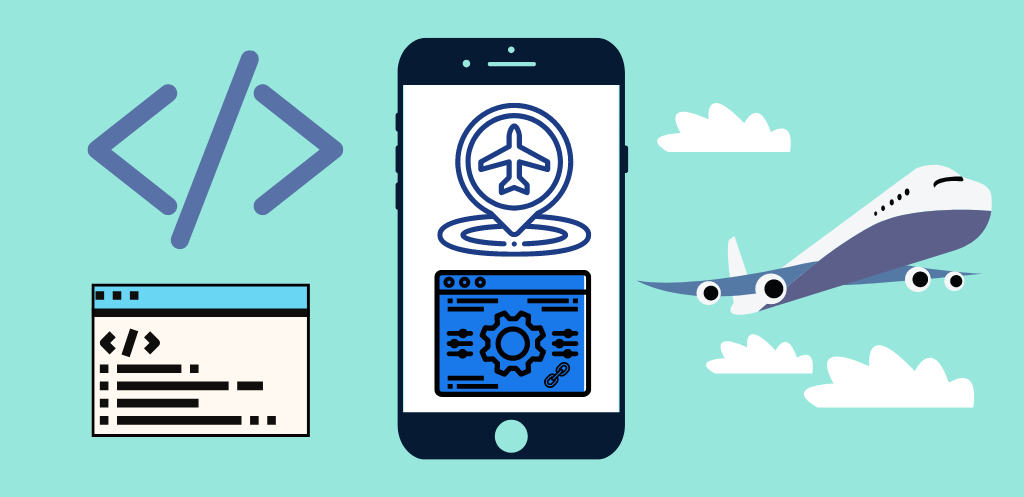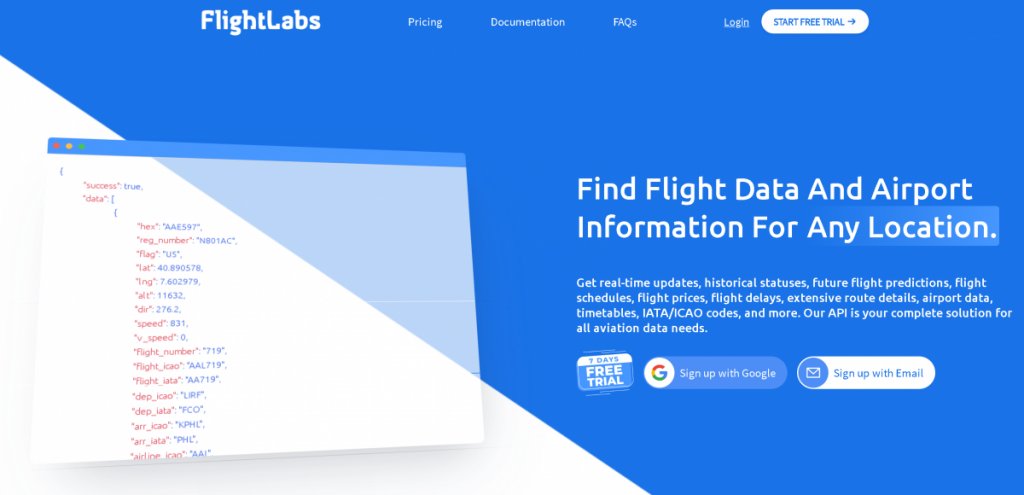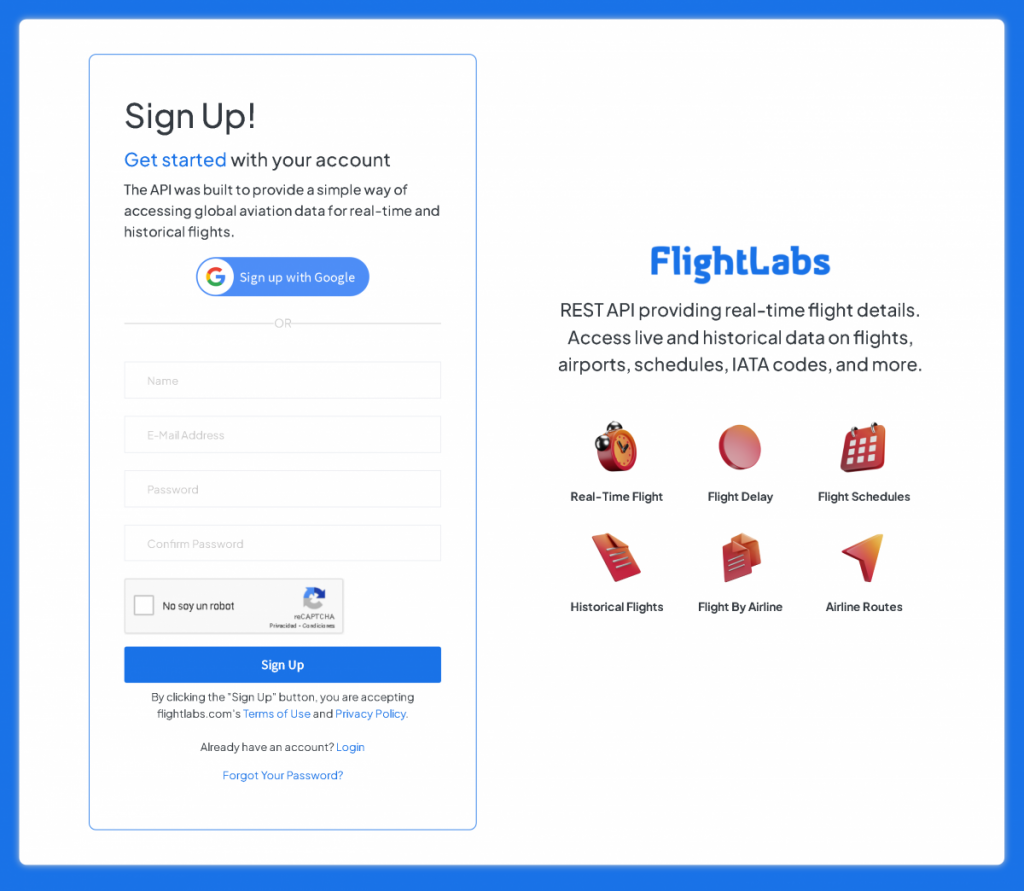In today’s fast-paced world, where information flows as swiftly as the winds that carry our planes, the need for precise and timely flight data is paramount. Enter to a Flight Data API—an innovation that has revolutionized the aviation industry and beyond. These APIs, like FlightLabs, are the lifeline for developers and businesses alike, providing accurate flight information that fuels a multitude of applications and services.
How Flight Data APIs Work
At the core of any Flight Data API lies a sophisticated system for data collection and aggregation. This involves gathering flight information from a myriad of sources, including airlines, airports, air traffic control systems, and radar data. The raw data is then cleaned, verified, and consolidated to ensure accuracy and reliability.
The process doesn’t stop there. Advanced algorithms and machine learning models are employed to analyze patterns and predict potential discrepancies. This continuous loop of data collection and refinement ensures that the information provided by the API remains up-to-date and precise.
The flexibility of API integration means that developers can tailor the data retrieval process to meet their specific needs. Whether it’s embedding a flight tracker on a travel website or developing a custom application for airline operations, the possibilities are endless. Moreover, robust documentation and support provided by API providers facilitate seamless integration, even for those new to the field.

Importance of A Flight Data API in Developement Projects
In the digital age, user experience is paramount. Flight Data APIs enable developers to create applications that deliver real-time, accurate information to users, enhancing their overall experience. Whether it’s a passenger checking the status of their flight or a travel agent booking a trip, having access to reliable data is crucial. By leveraging Flight Data APIs, developers can build features that offer instant updates, personalized notifications, and detailed flight information. This not only meets user expectations but also fosters trust and satisfaction, leading to higher engagement and loyalty.
For businesses, especially those in the travel and aviation sectors, operational efficiency is key to success. Flight Data APIs streamline operations by providing critical data that can be used to optimize various processes. Airlines can manage their fleets more effectively, airports can coordinate ground services better, and logistic companies can ensure timely deliveries.
The integration of Flight Data APIs into backend systems allows for automated workflows and real-time decision-making. For example, an airline’s operational control center can use flight data to dynamically allocate resources, such as crew and aircraft, based on current conditions. This level of automation reduces delays, minimizes costs, and improves overall service quality.
Spotlight on FlightLabs: Key Features and Capabilities

Real-Time Flight Endpoint
One of the standout features of the FlightLabs is its Real-Time Flight Endpoint. This endpoint provides up-to-the-minute information about flight statuses, including departure and arrival times, delays, and cancellations. The data is sourced from multiple providers and is continuously updated to ensure accuracy.
Flight Data Endpoint
The FlightLabs‘ Flight Data Endpoint offers comprehensive information about past and future flights. This includes details such as flight routes, aircraft types, and historical performance data. Developers can use this endpoint to build applications that require detailed flight information, such as travel planners and analytics tools.
Airlines Endpoint
The Airlines Endpoint provides information about airlines, including their codes, names, and operational details. This FlightLabs‘ endpoint is particularly useful for applications that need to categorize flights by airline or display information about specific carriers. By integrating this endpoint, developers can enhance their applications with rich airline data.
Furthermore, FlightLabs provides robust support and regular updates, ensuring that developers have access to the latest data and features. The API also offers flexible pricing plans, catering to different project sizes and budgets. Whether you’re a solo developer working on a personal project or a large enterprise with complex requirements, FlightLabs has a solution that fits your needs.
Getting Started with FlightLabs
- Registration and API Key Acquisition: Getting started with FlightLabs is a straightforward process. First, you need to register on the FlightLabs website and create an account. Once registered, you can obtain your API key, which is required for accessing the API endpoints. The registration process is quick and easy, ensuring that you can start using the API without any delays.

- Setting Up the Development Environment: After acquiring your API key, the next step is to set up your development environment. FlightLabs provides comprehensive documentation and code samples to help you integrate the API into your project. Whether you’re using Python, JavaScript, or another programming language, you’ll find examples and tutorials to guide you through the process.
https://www.youtube.com/watch?v=1pueN0P-UC8
Conclusion: The Advent of Flight Data APIs
As the aviation industry continues to evolve, the importance of reliable flight data will only grow. FlightLabs is at the forefront of this evolution, offering innovative solutions that empower developers and businesses to achieve their goals. By leveraging the capabilities of FlightLabs, you can enhance your applications, streamline operations, and deliver exceptional experiences to your users.
Related Post: Top API Marketplaces For Developers: A Comprehensive Guide

